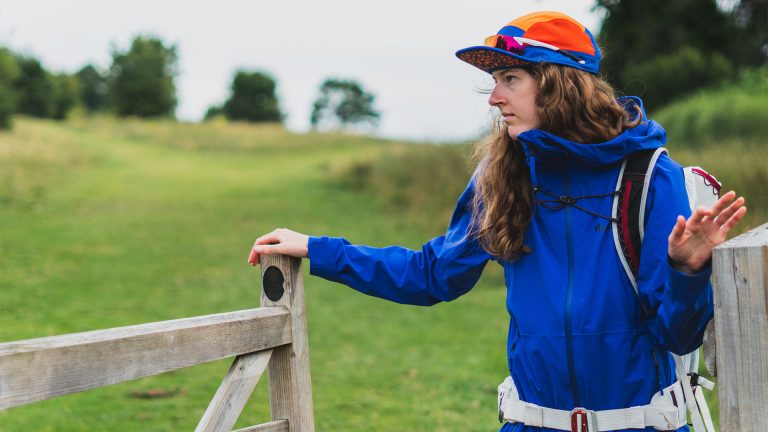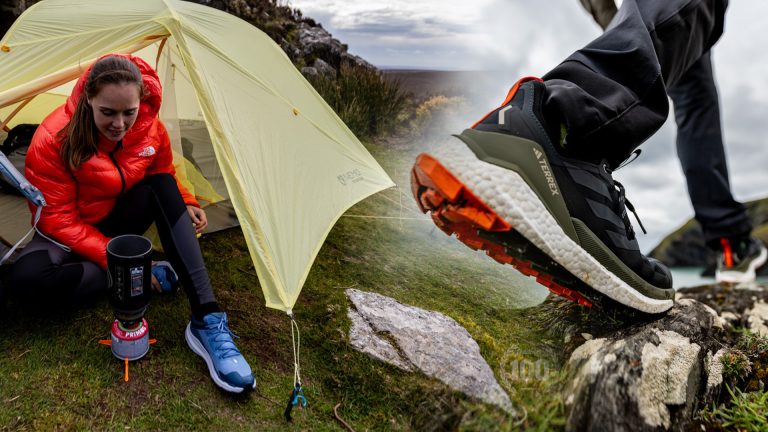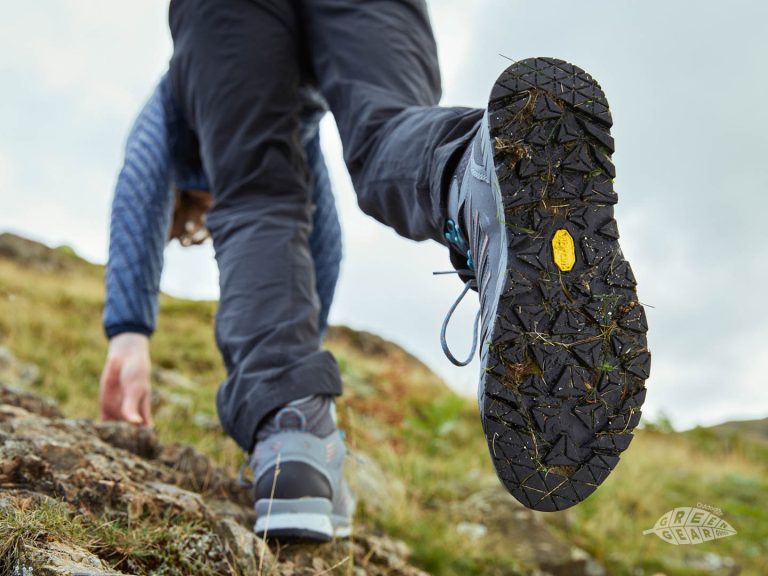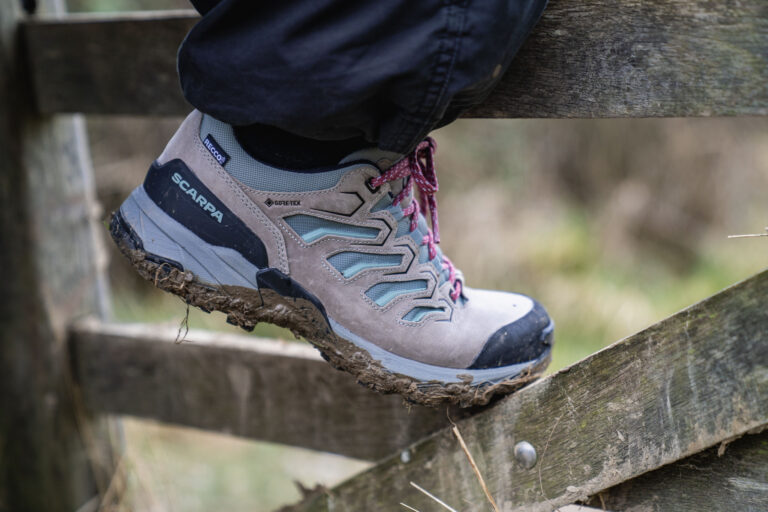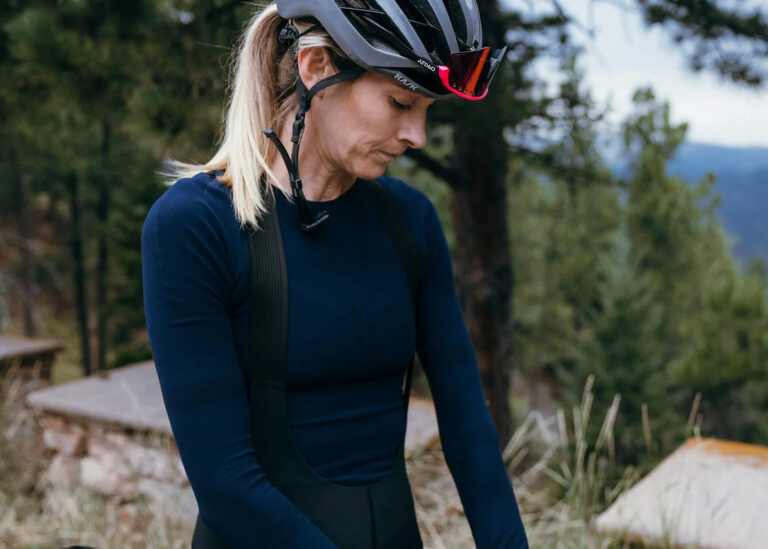|
Butcher’s
Dog! Regular outdoor fitness tips from the
canine on creatine. Cold wet nose and glossy coat
guaranteed.
Walk Up Hills More Easily!
Walking on the flat or downhill is basically easy – strap
on a heart rate monitor and you’ll see that your pulse
doesn’t even reach what runners would think of as a
‘training zone’. Heading up hill’s a different matter
altogether. On steepish climbs and, particularly, with a big
pack, you’ll be working hard enough to push your heart rate
up through the roof, to running levels in fact.
Why? If you think about it, you’re lifting your
bodyweight against gravity with every step so it’s a bit
like resistance training. That’s a big difference from flat
walking where loads are significantly less and a big problem
if you only get out on the hills occasionally. So, if you
find walking up hills hard, what can you do about it? Here’s
a few tips that could help you motor up that hill next time
out.
Pace Yourself
Don’t be tempted to go screaming into things. You want to
choose a nice, steady pace that you can sustain over a
long-ish period. Whatever you do, don’t push yourself until
you become breathless and your legs are burning as you’ll be
asking for trouble later. What happens then is that you use
hard-to-replace glycogen reserves and build up lactate
chemicals in your muscles that will make you less efficient
for the rest of the walk. Better to stop and have a quick
breather than push yourself into the physiological death
zone….
Walking Technique
You’d be surprised how many people try to take huge steps
going uphill. It’s actually more efficient to lean slightly
into the slope and shorten your stride a little. If you find
a spot with a really big step up, look for an intermediate
foot hold so you can do it in two paces instead of one and
ease the load. Think of stairs – it’s easier to breeze up
closely-spaced steps than to go striding up huge, widely
spaced ones. Watch where you place your feet as well,
unsteady foot plants waste energy and make efficient walking
more difficult.
Trekking Poles
Poles can be a useful aid to an efficient walking
technique. They won’t make you fitter, but they can help
stabilise your upper body, improve balance and give you
rythmn. I don’t believe that your arms are actually helping
to pull you up – that’s what legs are for – but they make it
easier to use your legs efficiently. On steep slopes you
need to adjust poles to a length where you can plant them
comfortably in front of you so you get maxiumum
purchase.
Getting Fitter
The best way of getting good at walking up hills is,
surprisingly enough, to walk up lots of hills. Unfortunately
not all of us are lucky enough to have hills on tap, but
there are other ways of improving your hill climbing
prowess. Here are a few:
Running
The best training for walking up hills is running up
them. You’re using the same muscle groups in a very similar
way and the intensity of hill running will actually improve
your ability to operate at a lower level too. Don’t fret if
you don’t have many hills to run up, even running on the
flat will help improve your general hill fitness as you’ll
be working significantly harder than you would be walking
over the same terrain. If you do take up running, buy proper
running shoes from a specialist running shop and don’t
increase your mileage too quickly. A great source of basic
information is the Runners
World web site.
The Gym
You can train effectively for walking uphill without even
going outside. If you have access to a decently equipped
gym, several of the cardio-vascular machines can help build
climbing efficiency. Ideally you’re looking for exercises
which simulate the action of lifting your bodyweight against
gravity using your legs.
Treadmills are great, but you want to adjust the gradient
so you’re effectively walking or running up a steepish
slope. Also excellent are stair climbing machines like
Versaclimbers and Stairmasters as, again, you’re lifting
your bodyweight against gravity. Steppers are okay too for
the same reason. Don’t be tempted to cheat by abbreviating
the movement, you’ll negate the point of being there in the
first place and it’s hard to cheat on a real hill 😉
Work at a pace where you’re going relatively easily – if
you start panting and your legs are burning consistently,
you’re going to hard so drop the speed a little. Start off
with 20 minute sessions and build up till you’re doing
around an hour at a time. Ideally three sessions a week with
at least a day’s rest between each one would be idea.
Remember the gym staff are there to help you, so tell them
what you’re training for and ask them to draw up a specific
programme for you. It’ll help you train more
efficiently.
Our hot tip for avoiding boredom is some sort of personal
stereo or MP3 player and your favourite tunes. Close your
eyes and dream of mountains…
Hit The Stairs
If you work somewhere with a good few flights of stairs, walk up
instead of taking the lift. If that seems a bit daunting – hey, maybe
you’re on the 60th floor of Canary Wharf, build up gradually by
walking up a few floors then taking the lift and increasing the
number of flights you walk every day. Do the same if you’re commuting by tube, evey little helps.
It’ll Be Worth It
Put the effort in and hill climbing in the mountains will
be that much easier. It still won’t be a breeze, but by
preparing, you’ll suffer less and enjoy yourself more and
hey, isn’t that why you got to the hills in the first
place?
Happy hill climbing
Yours barkingly
Woof!
The Butcher’s Dog |


